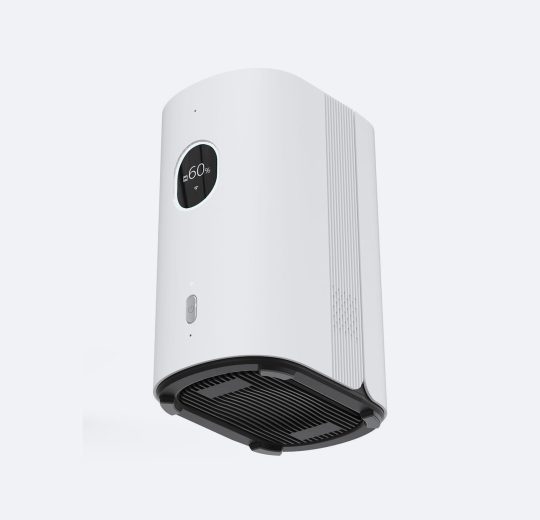Introduction
AINX has officially introduced NodeX 100, an edge-intelligent node device purpose-built for decentralized AI networks. It integrates lightweight local computing, standardized protocol interfaces, and task scheduling modules, while supporting complex model execution in collaboration with cloud GPUs.
Unlike traditional edge computing devices, NodeX 100 is not just a passive compute provider — it is a dedicated AI task execution endpoint for real-world deployments. It supports key workloads such as model inference, data preprocessing, multimodal generation, and federated learning.
In a participatory AI architecture, the absence of trustworthy, distributed, and verifiable task execution nodes would make true decentralization impossible. NodeX serves as the crucial physical anchor that makes this architecture a reality.
The Role of NodeX: A Task-Driven AI Node
In traditional Web3 networks, nodes mainly handle consensus or data storage. In decentralized AI networks, however, nodes have evolved into active task execution agents:
No longer just “passively syncing blocks” — NodeX actively executes AI workloads, generates results, and uploads proof-of-execution for on-chain validation.
NodeX is defined as a Task-Driven Node, with the following core capabilities:
- Task scheduling response: Responds to on-chain task requests with high availability;
- Local model execution: Runs lightweight AI models such as text generation or image analysis locally;
- Privacy-preserving data collaboration: Participates in anonymization and federated learning without uploading raw data;
- Cloud-edge compute coordination: Collaborates with cloud GPUs to execute compute-intensive tasks.
This makes NodeX the execution layer of the AINX network — not just a compute node, but an active AI task processor.
How NodeX Enables Trustworthy AI Collaboration
In the AINX network, the core of AI services is not simply “owning a model,” but “completing a task.” To be eligible for rewards, a task must:
- Be genuinely executed;
- Be externally verifiable;
- Have a complete record for traceability.
The Trusted Execution Mechanism of NodeX
- Intelligent task scheduling + node response
NodeX receives tasks via the Helioq protocol and autonomously decides whether to execute locally or in collaboration with cloud infrastructure. Upon task completion, results and execution logs are validated by Checker nodes (specialized validators), which serve as the basis for reward distribution.
2. Federated learning and differential privacy
During task execution, NodeX does not transmit raw data. Instead, it contributes to model training via Federated Learning and applies Differential Privacy to enhance anonymity. All actions are recorded to ensure full traceability.
3. Behavior traceability and incentive alignment
Merely completing a task is not sufficient for earning rewards. The traceability of execution behavior and the alignment of incentives are critical. NodeX automatically records key behavioral data during each task — such as model calls, resource usage, response times, and node status — and matches them against the AINX network task system.
NodeX: The Economic Executor of AI Tasks
NodeX serves as the bridge between computing resources and on-chain incentives. It executes the logic of a task-based economy.
Three Economic Roles of NodeX
- Executor: Earns BIT tokens for successfully completing AI tasks;
2. Validator: Runs Checker software to validate others’ tasks and earns additional rewards;
3. Processor: Participates in privacy-preserving model training without exposing raw data.
A single node can take on all three roles simultaneously, forming a closed loop of execution, validation, and collaboration.
Conclusion: NodeX as the Infrastructure for Decentralized AI
The essence of decentralized AI is not about decentralizing models — it’s about decentralizing task completion.
NodeX is not a plug-in or optional enhancement — it is the indispensable, hardware-based execution layer that anchors AINX’s decentralized AI network in the physical world.





